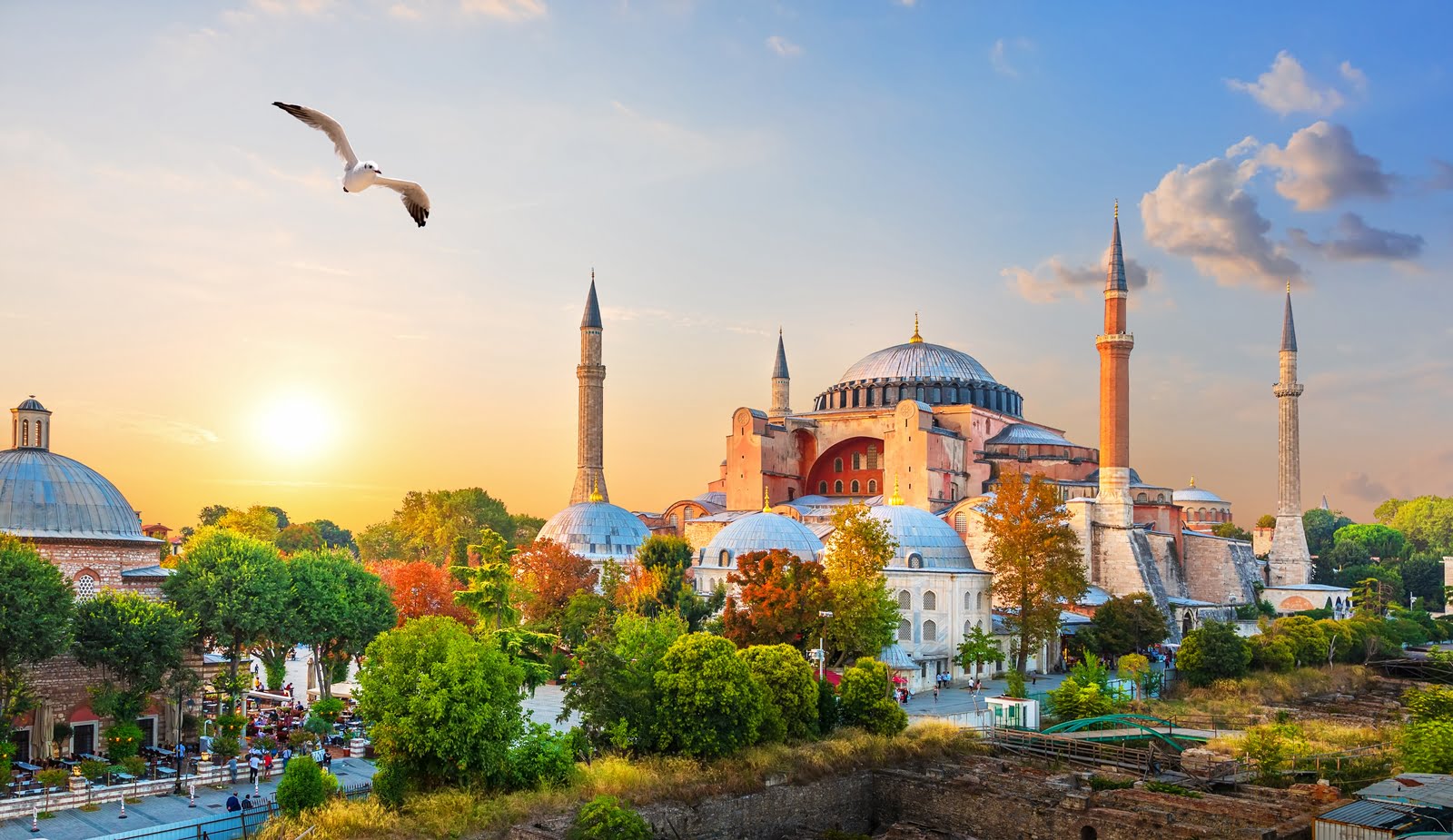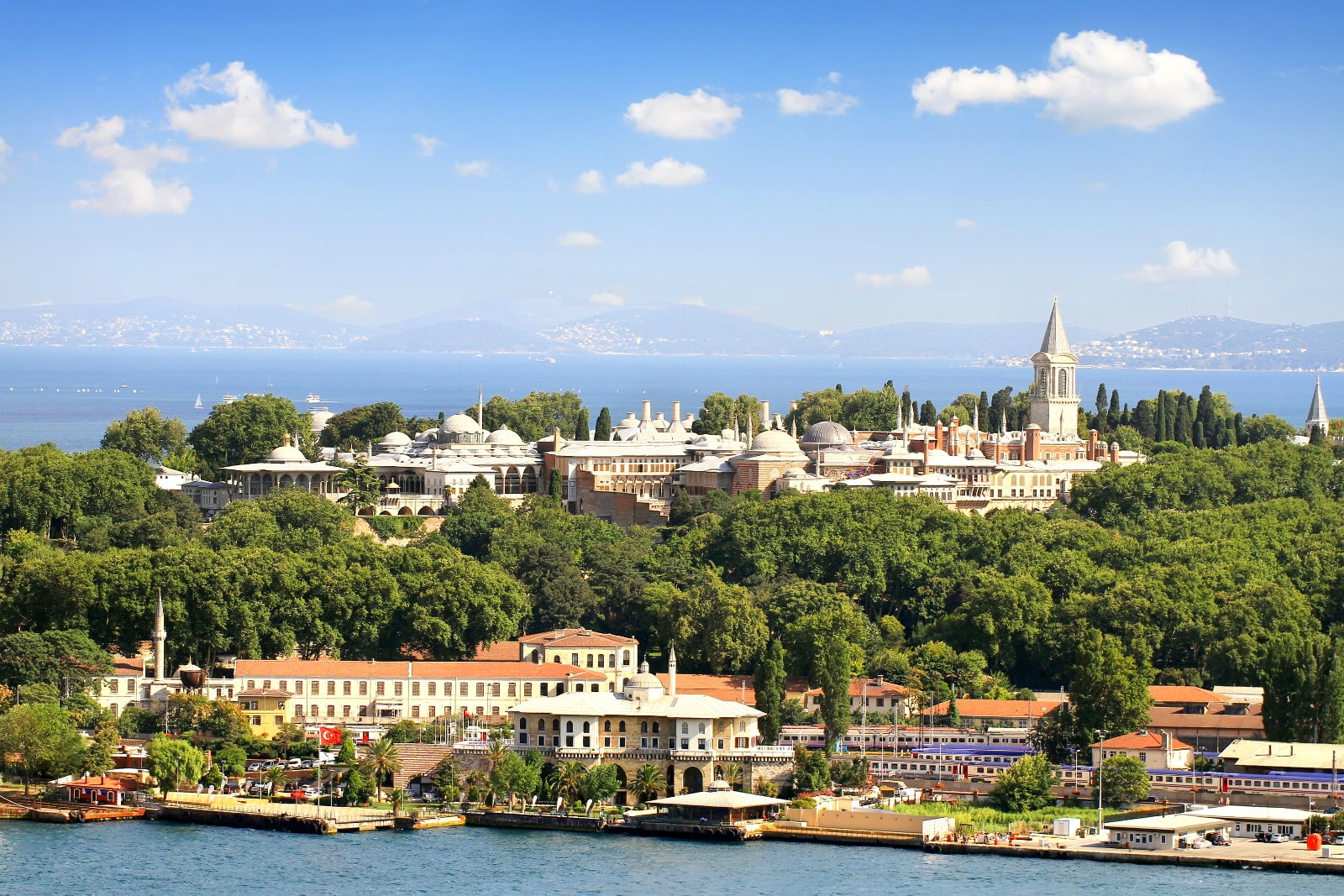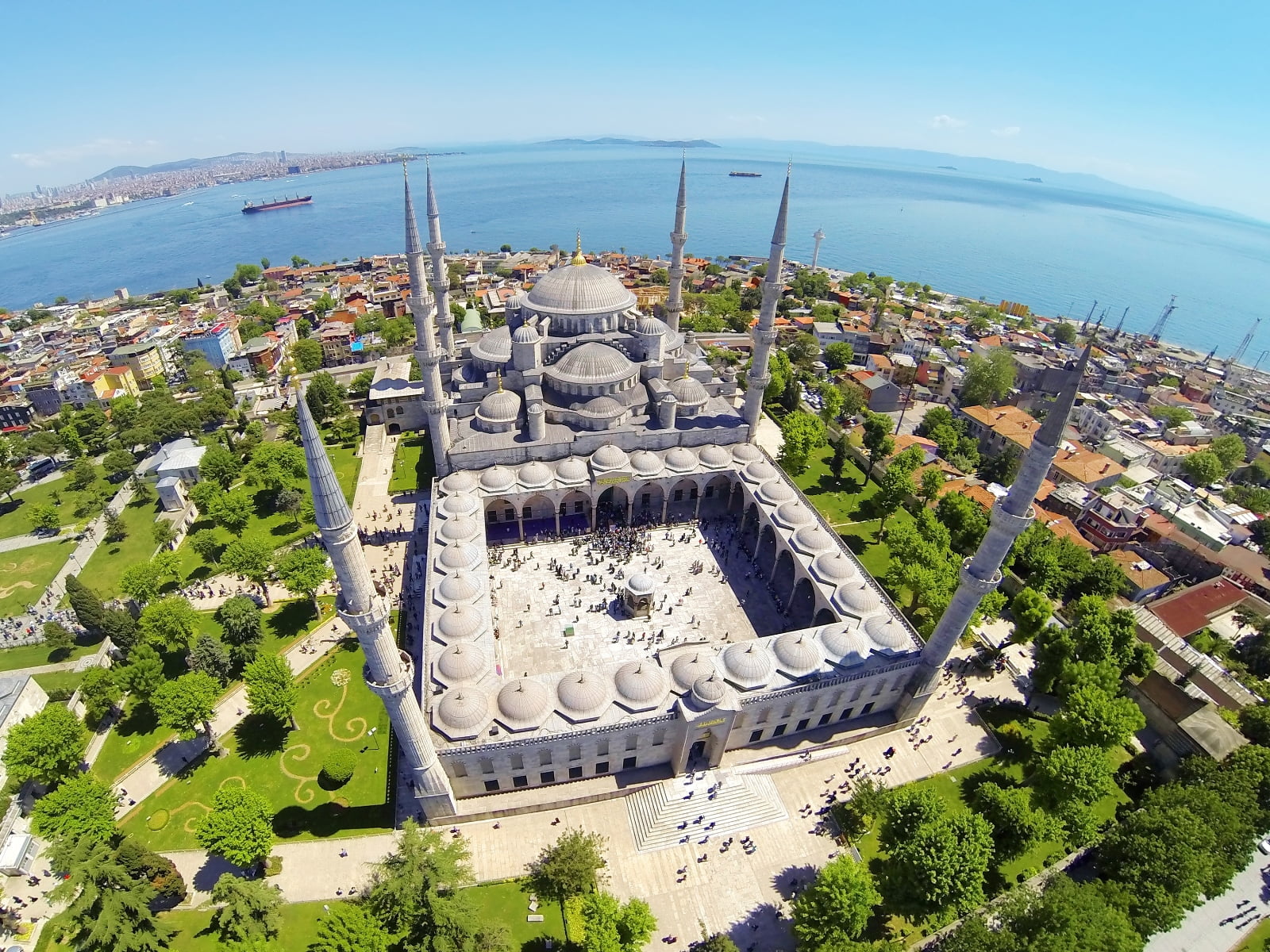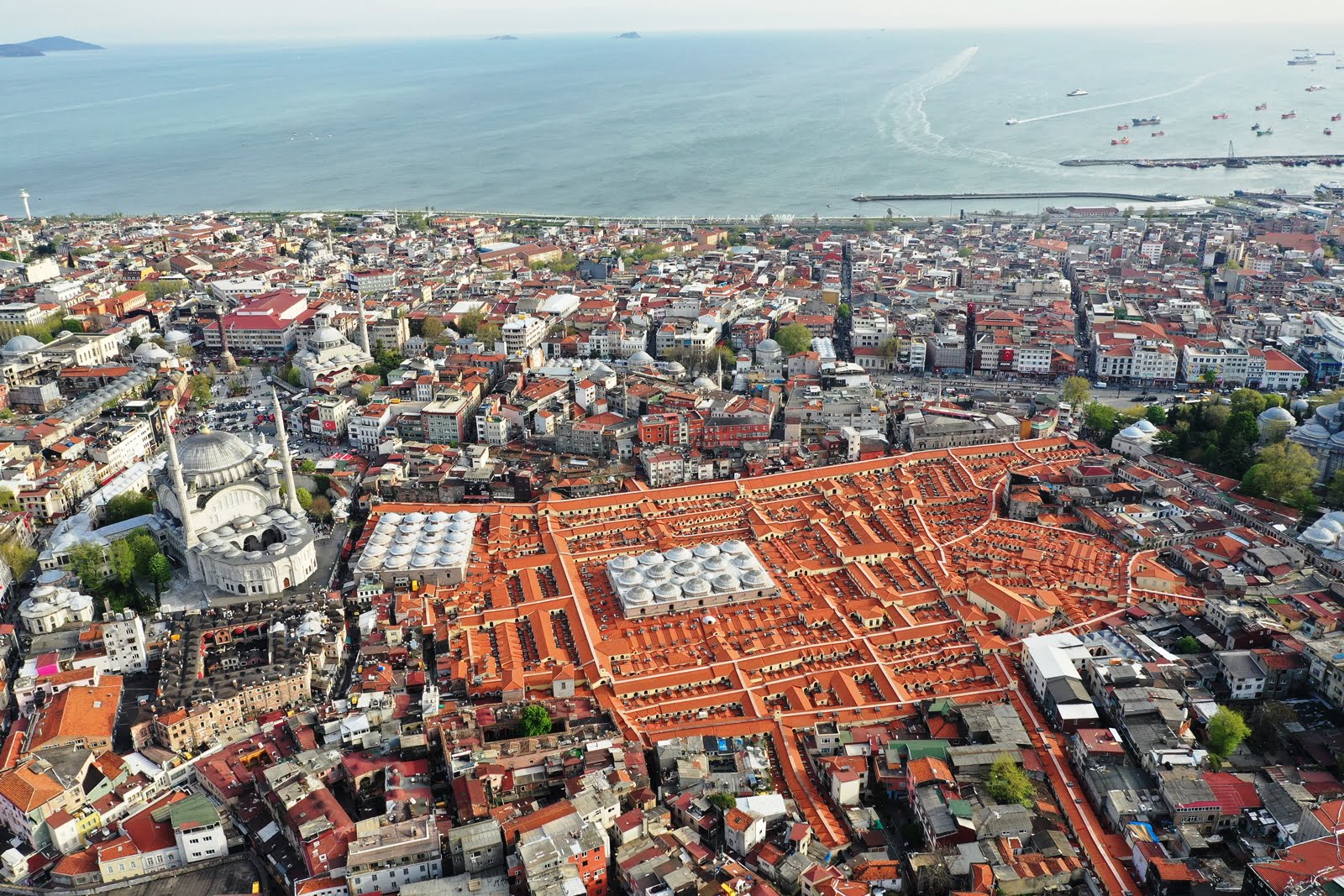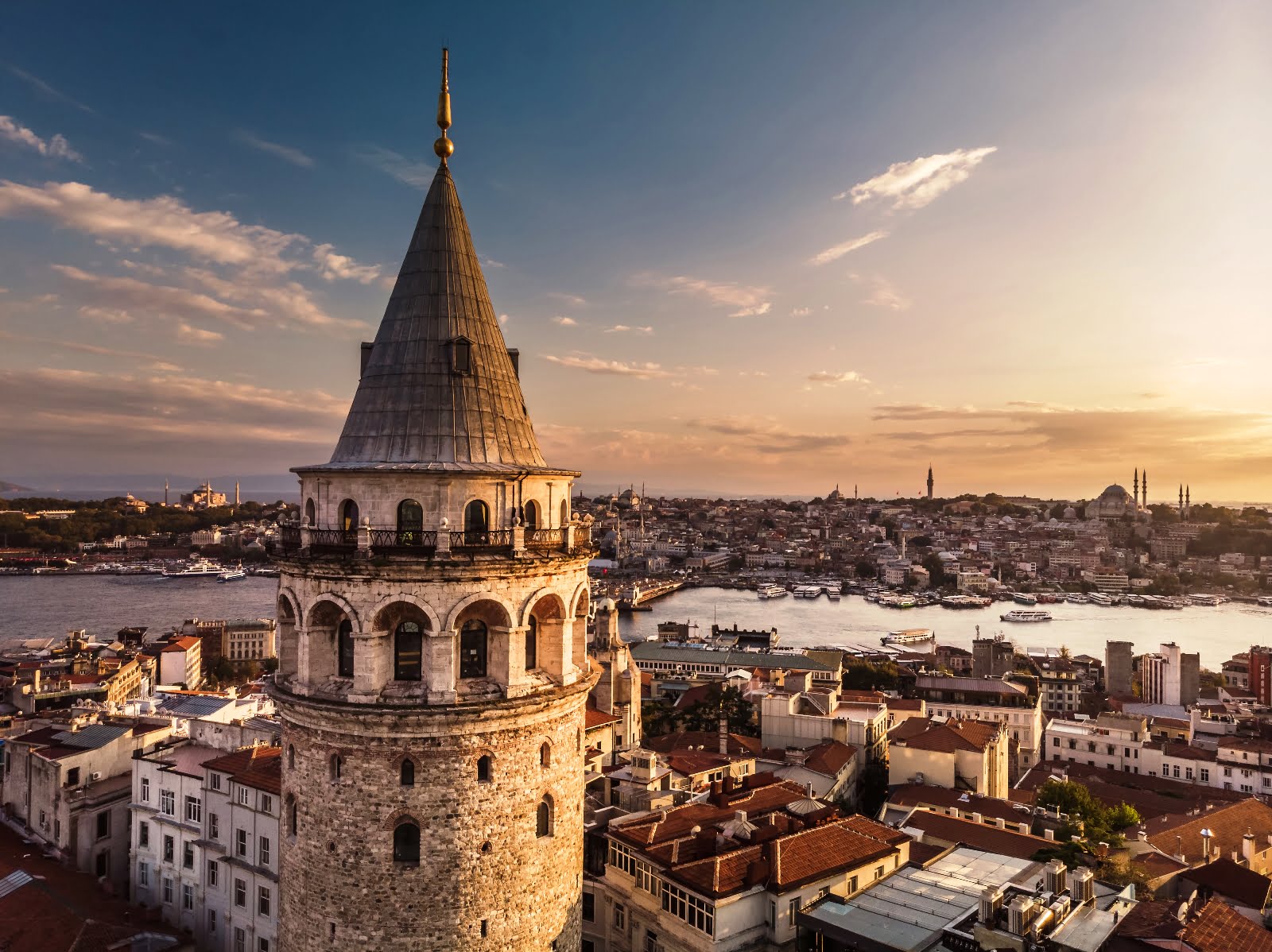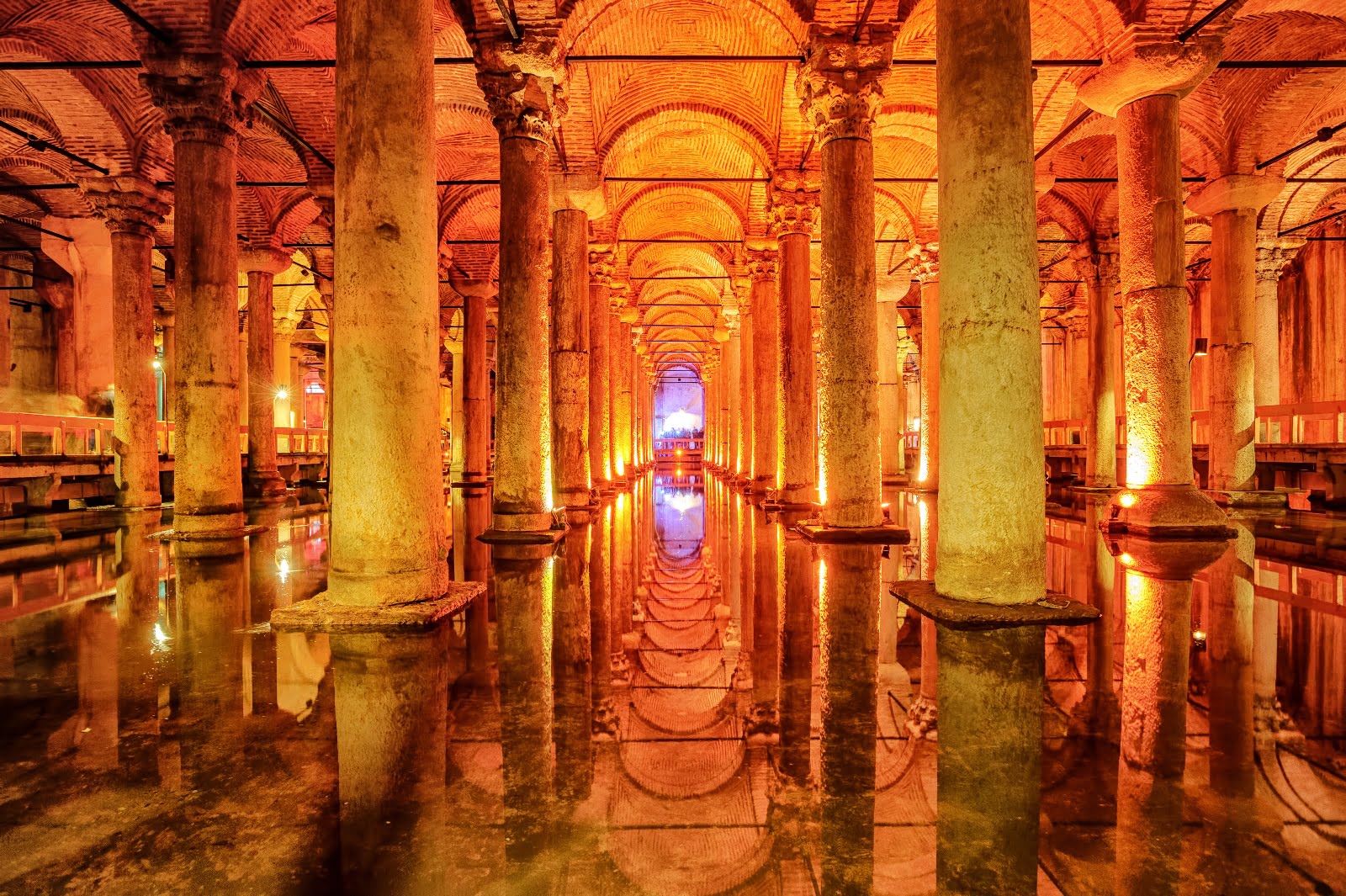Istanbul is a city where East meets West, blending centuries of history, culture, and modernity. As the only metropolis spanning two continents, it offers a rich mix of ancient landmarks, diverse neighborhoods, vibrant cuisine, and efficient transportation. Whether you’re a first-time visitor or a returning traveler, this Istanbul travel guide covers everything you need to know, from top Istanbul attractions to local tips for a smooth trip.
Fascinating Istanbul Facts

Before exploring the city, here are some Istanbul facts that make it unique:
- A City on Two Continents – Istanbul is the only city in the world that straddles Europe and Asia, divided by the Bosphorus Strait.
- A City of Names – It was formerly known as Byzantium, then Constantinople, before officially becoming Istanbul in 1930.
- Mosques Everywhere – Home to over 3,000 mosques, including the famous Blue Mosque and Hagia Sophia.
- Population Hub – Istanbul is Turkey’s largest city, with over 16 million residents.
- Bazaars & Shopping – The Grand Bazaar is one of the world’s oldest and largest covered markets, dating back to 1461.
Some Stats & Trends about Istanbul
Istanbul welcomed over 16.4 million tourists in 2023, making it one of the top 10 most visited cities in the world. (Source: Turkish Ministry of Culture and Tourism)
Istanbul’s tourism revenue exceeded $13 billion in 2023, contributing significantly to Turkey’s economy. (Source: Istanbul Tourism Association)
The Grand Bazaar attracts over 91 million visitors annually, making it one of the most-visited markets globally. (Source: Istanbul Chamber of Commerce)
Hagia Sophia receives more than 3.5 million visitors per year, solidifying its status as Istanbul’s most visited landmark. (Source: Turkish Tourism Board)
More than 50% of tourists in Istanbul use public transport, with the Istanbulkart being the most popular payment method for trams, metros, and ferries. (Source: Istanbul Metropolitan Municipality)
Istanbul’s metro network has grown by 67% in the last decade, with more expansions planned, including new connections to both airports by 2026. (Source: Istanbul Metro Authority)
Sabiha Gökçen and Istanbul Airport together serve over 100 million passengers annually, making Istanbul a major global transit hub. (Source: IGA Airport Reports)
Istanbul has over 3,000 mosques, more than any other city in Turkey, reflecting its deep Ottoman and Islamic heritage. (Source: Istanbul Religious Affairs Department)
The Bosphorus Strait sees over 48,000 ships passing annually, making it one of the busiest waterways in the world. (Source: Turkish Maritime Authority)
- Istanbul ranks among the top 5 cities in Europe for digital nomads, thanks to its affordable cost of living, fast internet, and coworking spaces. (Source: NomadList 2024 Report)
A Brief Look at Istanbul’s History

Istanbul’s history stretches back over 2,600 years, evolving from a Greek colony to a Byzantine capital, an Ottoman stronghold, and now a global city.
- Byzantine Era (330-1453) – Originally called Byzantium, it became Constantinople under Emperor Constantine, serving as the heart of the Byzantine Empire.
- Ottoman Empire (1453-1922) – Sultan Mehmed II (Mehmed the Conqueror) captured the city in 1453, transforming it into the Ottoman capital, shaping much of its current architecture, culture, and cuisine.
- Modern Turkey (1923-Present) – After the fall of the Ottoman Empire, Ankara became Turkey’s capital, but Istanbul remained the country’s cultural and economic center.
Today, Istanbul’s mix of Byzantine, Ottoman, and modern architecture makes it one of the world’s most fascinating travel destinations.
Top Istanbul Attractions You Can’t Miss
Istanbul is filled with historical landmarks, vibrant markets, and scenic waterfronts. Here are the must-visit attractions:
1. Hagia Sophia
One of the most iconic landmarks, it was first a church, then a mosque, then a museum, and now a mosque again. Its stunning dome and mosaics are breathtaking.
2. Topkapi Palace
This Ottoman palace housed sultans for over 400 years and is home to imperial treasures, stunning courtyards, and the famous Harem section.
3. The Blue Mosque
Known for its six minarets and intricate blue tiles, this active mosque is one of the most visited religious sites in Turkey.
4. The Grand Bazaar
A shopping paradise with over 4,000 shops, selling handmade carpets, ceramics, jewelry, spices, and textiles.
5. Bosphorus Cruise
A Bosphorus cruise lets you experience Istanbul from the water, offering unmatched views of palaces, mosques, and bridges connecting two continents.
6. Galata Tower
For panoramic city views, climb Galata Tower, one of Istanbul’s oldest and most famous landmarks.
7. Basilica Cistern
An underground marvel built in the 6th century to supply water to the city, featuring eerie lighting and Medusa head sculptures.
Best Time to Visit Istanbul
The best time to visit Istanbul depends on your preferences:
- Spring (April-May) & Autumn (September-November) – Ideal weather, fewer crowds, and perfect for sightseeing.
- Summer (June-August) – Hot and humid, but lively with festivals. Expect long queues at attractions.
- Winter (December-February) – Fewer tourists, lower prices, and a chance to see Istanbul with snow, but expect cold temperatures.
Istanbul Neighborhoods: Where to Stay and Explore
Istanbul is a city of diverse neighborhoods, each offering a unique experience:
- Sultanahmet – The historic heart of Istanbul, home to Hagia Sophia, Blue Mosque, and Topkapi Palace.
- Taksim & Beyoğlu – The city’s modern and nightlife hub, featuring Istiklal Street, Galata Tower, and vibrant restaurants.
- Kadıköy (Asian Side) – A trendy district known for local markets, cafes, and a laid-back atmosphere.
- Beşiktaş – A lively area close to Dolmabahçe Palace, perfect for bars, markets, and waterfront views.
Istanbul Transportation: How to Get Around the City
Navigating Istanbul is easy and affordable, thanks to an efficient public transport system.
- Istanbulkart – The city’s transport card, used for metros, buses, trams, ferries, and metrobuses.
- Trams & Metro – Best for reaching Sultanahmet, Taksim, and key districts quickly.
- Buses & Minibuses – Extensive coverage but slower due to traffic.
- Ferries – A scenic way to travel between the European and Asian sides.
- Taxis & Ride Apps – Use BiTaksi or Uber for reliable rides, as some taxi drivers may overcharge tourists.
Istanbul Cuisine: What to Eat in Istanbul
Food lovers will fall in love with Istanbul’s rich cuisine, influenced by Ottoman, Middle Eastern, and Mediterranean flavors.
Must-Try Dishes:
- Kebabs – Try Adana, Urfa, and döner kebabs for the best Turkish flavors.
- Meze Platters – Small dishes like hummus, eggplant salad, and stuffed grape leaves.
- Simit – A Turkish-style bagel covered in sesame seeds, perfect for breakfast.
- Baklava – A sweet, flaky pastry with honey and pistachios.
- Turkish Tea & Coffee – A daily ritual in Turkey, served strong and aromatic.
Shopping in Istanbul: Best Spots for Every Budget
Istanbul offers traditional markets, modern malls, and boutique stores. Whether you’re looking for handcrafted goods or high-end fashion, here’s where to shop:
- Grand Bazaar – One of the world’s oldest markets with carpets, jewelry, ceramics, and leather goods. Bargain for the best prices.
- Spice Bazaar – Famous for spices, Turkish delight, teas, and nuts.
- Istiklal Street – A lively shopping street with local and international brands.
- Nişantaşı – The luxury district for designer fashion and high-end boutiques.
- Shopping Malls – Istinye Park, Kanyon, and Zorlu Center for international brands and fine dining.
Nightlife in Istanbul: Best Places to Experience the City After Dark
Istanbul’s nightlife ranges from rooftop bars with Bosphorus views to underground clubs and live music venues.
- Taksim & Beyoğlu – The heart of Istanbul’s nightlife, with bars, clubs, and jazz lounges.
- Kadıköy – The best for local pubs, craft beer, and indie music spots.
- Ortaköy & Bebek – High-end cocktail bars and waterfront lounges.
- Galata Rooftop Bars – 360 Istanbul and Leb-i Derya offer breathtaking city views.
- Bosporus Nightclubs – Exclusive clubs like Sortie and Reina attract international DJs and celebrities.
Istanbul’s nightlife suits every style, from casual bars to glamorous party scenes.
Istanbul Safety Tips for Tourists
Istanbul is generally safe, but as in any large city, tourists should be cautious.
- Beware of Scams – Avoid friendly strangers offering tours, taxi overcharges, and fake jewelry scams.
- Keep Your Belongings Safe – Watch out for pickpockets, especially in crowded areas like Taksim, the Grand Bazaar, and public transport.
- Use Licensed Taxis – Use apps like BiTaksi or Uber to avoid being overcharged.
- Respect Local Customs – Istanbul is modern, but some areas have conservative dress codes, especially in mosques.
FAQs About Istanbul
What is Istanbul famous for?
Istanbul is famous for its unique location between Europe and Asia, its rich history, and stunning landmarks like Hagia Sophia, the Blue Mosque, and the Grand Bazaar. It’s also known for its bustling markets, delicious cuisine, and scenic Bosphorus views, making it one of the most visited cities in the world.
Who founded Istanbul?
Istanbul was originally founded as Byzantium by Greek settlers in 660 BC. It later became Constantinople when Emperor Constantine made it the capital of the Byzantine Empire in 330 AD. In 1453, the Ottomans, led by Sultan Mehmed II, conquered the city, renaming it Istanbul.
How do I get from Istanbul Airport to the city center?
You can reach central Istanbul from Istanbul Airport (IST) using:
- Havaist Airport Shuttle – Cheapest and most convenient option (90 minutes).
- Metro M11 Line – Partially open, with connections to city transport.
- Taxis & Private Transfers – Faster, but more expensive. Always use licensed taxis or ride apps like BiTaksi.
Will I need cash in Istanbul, or can I use a credit card?
Most restaurants, hotels, and shops accept credit cards, but it’s useful to carry cash (Turkish Lira) for small markets, taxis, and street vendors. ATMs are widely available, and money exchange offices offer competitive rates.
What is the best way to travel between the European and Asian sides of Istanbul?
The best way to travel between continents in Istanbul is by:
- Public ferries – Affordable, scenic, and frequent.
- Marmaray Metro – The fastest underground connection.
- Bridges (Taxis, Buses, Private Cars) – Best avoided during rush hours due to heavy traffic.
How safe is Istanbul for tourists?
Istanbul is generally safe for tourists, but it’s important to stay cautious:
- Watch out for pickpockets in crowded areas like the Grand Bazaar and public transport.
- Avoid tourist scams, such as overpriced taxi fares or “friendly strangers” offering help.
- Stick to well-lit areas at night, especially in unfamiliar neighborhoods.
What are some lesser-known places to visit in Istanbul?
Beyond the famous attractions, explore:
- Balat & Fener – Colorful historic streets with Orthodox churches.
- Pierre Loti Hill – Panoramic views and a relaxing tea garden.
- Çamlıca Hill – The highest point in Istanbul, offering stunning city views.
Will I need a visa to visit Istanbul?
Visa requirements depend on your nationality. Many travelers can enter Turkey with an e-Visa, which can be obtained online before arrival at evisa.gov.tr. Some nationalities can enter visa-free, while others require a stamped visa from an embassy. Check before traveling to avoid issues.
Tour Booking Advice
Insider Advice: Kickstart your Istanbul adventure with MegaPass Istanbul. This passes provides free access to many top attractions, tours and essential local services in the city with big savings.



